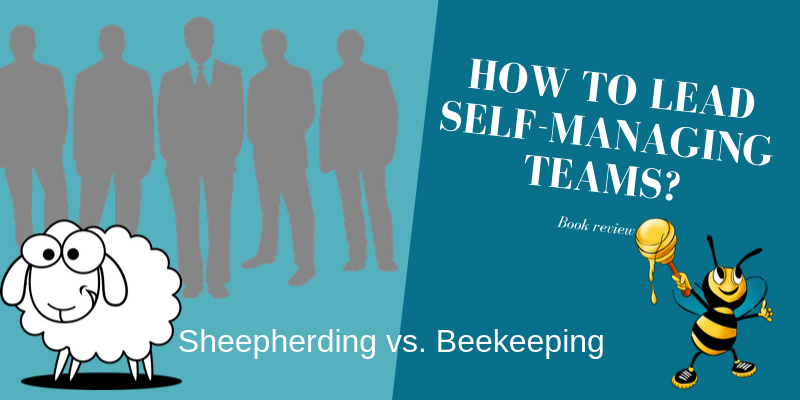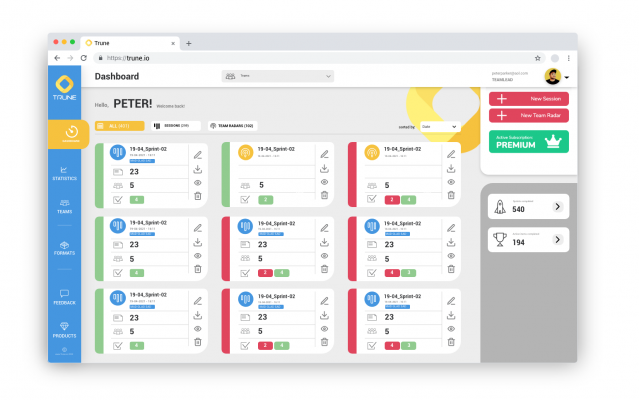To my surprise, there are a lot of parallels between leading self-managing teams and managing beehives.
I recently read a great book called “How To Lead Self-Managing Teams?: A business novel on changing leadership from sheepherding to beekeeping” (affiliate link) by Rini van Solingen. In this novel, the author tells a story about the IT manager Mark, who wants to introduce self-managing teams in his organization to make his life easier.
During a vacation, the grandfather of Mark tells him how he switched careers from being a shepherd to a beekeeper and what he learned during this journey. Mark realizes that he manages his teams mostly like a shepherd, but he must think and act more like a beekeeper in order to develop self-managing teams.
Let´s outline the most crucial takeaways from this book.
Sheepherding
If you want to develop self-managing teams, then you need to stop treating your people like sheep.
Command and Control
A shepherd tells the sheep exactly in which direction they have to go, where they eat, what they eat and so on. Then he regularly checks on them to make sure everything is the way he expects it to be.
Similarly, traditional managers often tell their people exactly what to do and maybe even how to do it. Then they ask for constant status updates and results.
So they follow a command and control pattern. They tell their “sheep” what to do and check up on them regularly.
Dogs bark
When there are too many sheep then the shepherd gets himself a dog to help. He trains the dog to listen to his commands and then bark to the sheep accordingly in order to steer them in the right direction.
A manager higher up in the hierarchy often has more sheep than he can manage by himself. For instance, the manager of the department has multiple team leaders reporting to him, while every team leader manages their own team. The department manager trains the team leaders to think and act exactly like himself. And if necessary the team leaders bark to their team if the department manager demands it.
Beekeeping
Beekeeping is fundamentally different from sheepherding. Bees manage themselves. Bees just want to do their work and they do it as good as possible.
The better the environment and the surroundings, the better the taste of the honey and the more honey they produce. For instance, when there are a lot of flowers they can produce more honey. If the flowers are far away, then the bees have to fly a long distance and therefore it takes longer to produce a certain amount of honey.
Trust your team
The key to develop self-managing teams is to trust your team that they do their work as efficient and effective as possible. They are all experts in their role and know what is best. And even when they don’t know, it provides a learning opportunity so they will know it the next time.
The important thing the self-managing team needs is a defined goal and transparent results. That´s what the manager of the team is responsible for. He needs to define a clear goal and make the ongoing results transparent to the team. Then the team by itself will fill in the details on how to get there.
Blame the process, not the team
When the bees don’t produce the expected honey, then the beekeeper does not blame the bees. In such situations, there is something wrong with the environment. Maybe the location of the beehive needs to be moved to a better place or there is something else wrong with the setup.
When your team does not deliver the expected results, then don’t blame the team. This is a problem with the environment or the process. You need to look into what is wrong there and fix it.
This is easier said than done. Because if there is a f*ckup then it is way easier to identify one of the people as the reason for the problem. But we need to look a level deeper and find the root cause of the issue. Most of the time the people tried to do their job as good as possible and the root cause of the issue is the environment or the process.
Change yourself first
In order to develop self-managing teams we as managers need to start with ourselves. We have to unlearn the old habits of managing people like a shepherd manages his sheep. We need to think and act more like a beekeeper.
I urge you to read the whole story of Mark and his grandfather. There are a lot more lessons in there for leading self-managing teams. It is a worthwhile read and the 140 pages take only a few hours to get some inspiration about leadership. You can get the book here (affiliate link).
That´s it for today. Stay tuned and HabbediEhre!

